I hate moving. This is something my bees and I have in common when it comes to relocating. Bees don’t take kindly at all when you move a beehive.
As a creature of habit, moves are terribly disruptive. It doesn’t matter why. It could be for an exciting new job, and I would still find it a bother.
I have to form new relationships, find out the best eating spots, and figure out which neighbors to nod at and which ones decrypt a wordless greeting as a sign of arrogance.
I’ve also found that if I don’t move too far from where I previously was, sometimes, I find myself heading to my old house because I’ve switched my brain to autopilot.
Moving your hive(s) may seem like a daunting task but fret not. We’ve broken down the task of relocating or moving a beehive into easy-to-follow steps.
So, whether you need to move a beehive a short or long distance, rest assured that this guide will give you the confidence to relocate your bee friends without risking their lives.
What You Need to Know on How to Move a Beehive

The major thing to do before you move your hive is to understand the bee. You need to consider the bee perspective of their home, the immediate environment, how they recognize the new hive location, getting confused bees that would go to their original hive location, and how they find their way back even when they go three miles away to forage.
Landmarks
The second thing they look at is landmarks. Bees are quick studies. If you have ever placed a
They have learned how to circumnavigate around this new structure. Foreigners, in this case, robbers, rely solely on the sweet smell of honey and dive headfirst into the screen because this is not their home.
They haven’t come on a tourist ride, so they don’t take the time to note the different structures present at this new hive.
Similarly, if you move a bee hive previously located next to your barn, there is a possibility that the very next day, you’ll have half the workers right around the old location. They would be buzzing as if to say, “Hey, what gives?! Wasn’t our hive right here a moment ago?”
Your barn formed a significant element in your bees’ geospatial map.
Timing

The timing of the move is very important. Bees work in the sun but love the shade. It’s best to move a hive to a new location in the evening or early morning.
This way, you have enough light to see what you’re doing, but it’s cool enough for the bees to be comfortable. To move the bees, you need to seal the entrance to the hive, and you don’t want the bees to overheat.
Closing off the entrances is done in the evening after all the forager bees have reported back from their field duties.
When they settle for some shut-eye, block the entrance with something breathable.
Some people use grass, others use
Odors
Odors are very important in the bee world, and pheromones are the first thing that moving bees will recognize about their home.
When you capture a swarm yet leave the queen on a branch in the tree, the bees will always leave the hive/container and go back to their beloved pheromone-releasing queen.
How Far Can a Bee Hive Be Moved?
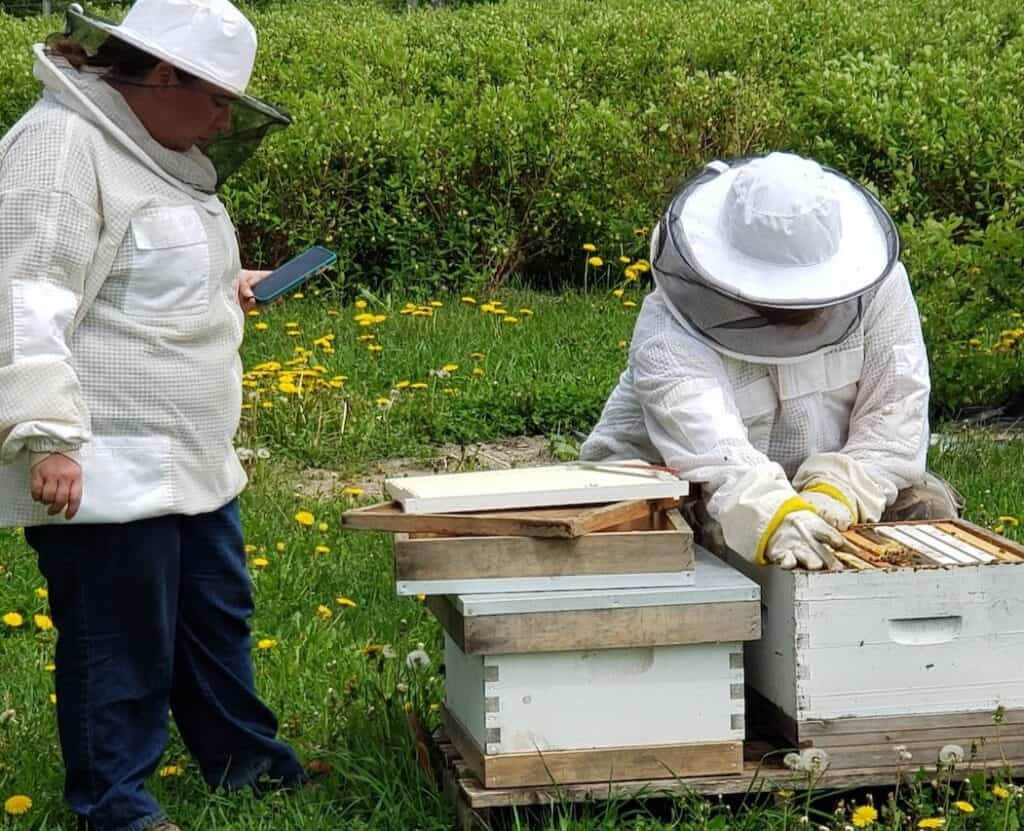
Consider this: Honey bees are not native bees in the U.S. That tells you that you can move bee hives across oceans.
This great move was done at a time when air transport was left to winged animals. It’s actually trickier to move honey bees a short distance than to move across the country.
Beekeepers in the pollination business take their bees on an annual pilgrimage to almond farms hundreds of miles away.
Once the bees get there, everything is new. Bees reorient themselves by making a map of their surroundings and new locations. In this case, there’s no chance that they will go in search of their original home.
When you move your bees a few yards, though, many of the old landmarks are still nearby, so it is harder for them to adjust to the new location of the hive.
How to Move a Beehive a Short Distance
We’ve boiled down moving a beehive short distances into 6 easy-to-follow to follow steps. Each step is outlined in greater detail below.
Pre-step – Give the bees a new landmark
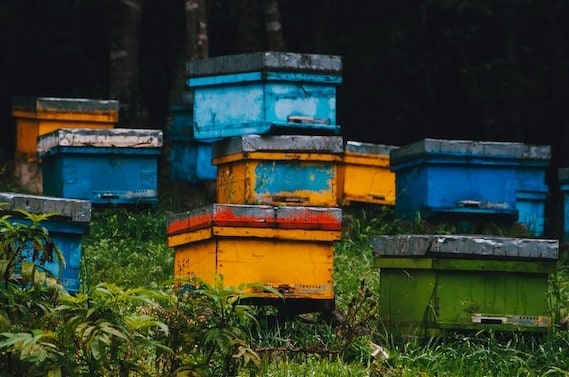
Moving beehives isn’t a spur-of-the-moment decision. You may have a week or so to make the move.
In order to help your bees identify their home in its new position, place
When you finally make the move, ensure that the board moves with it. Rusty, the beekeeper, describes these boards as runway lights for honey bees. It’ll help guide the ladies home.
Step 1 – Seal the bees in.
Even though you’re only moving hives short distances or from one corner of the backyard to the other, bees don’t take kindly to the earthquake sensation you cause with every step. As an added precaution, suit up.
A bee veil and gloves will help keep the stings away just in case a few angry ladies get out.
As mentioned previously, it is best to seal them in the hive after sunset. That way, you’re sure you have the whole colony indoors.
Step 2 – Strap the hive.
Even though the bees are really good at sealing up all the little cracks and crevices in the hive with sticky propolis, they may neglect the partition between the bottom board and the rest of the hive bodies.
To avoid the possibility of the hive falling apart while you transport bees, you can use
This will keep the body of the hive in one piece and make it easier to move.
Step 3 – Get help.
Honey bee hives, especially well-established ones, are quite heavy.
You will need someone to help you move a whole hive unless there’s some groundbreaking back replacement surgery I haven’t heard about.
Step 4 a) – Move it a couple of yards every other day.

Assuming your bee yard doesn’t go on for miles, your new location may be 30 feet or less from the original position. It means that your honey bees won’t feel the need to reorient themselves or form a new map of their surroundings because all the old landmarks are still there.
By doing a gradual move, i.e., moving a few feet every other day, your bees will return to the same original spot on the first day. Since the hive is quite near, they will find their way into the hive entrances. This also limits the probability of getting bee confusion and lost bees.
After a couple of days, when they stop ‘misplacing’ their home and adjust, move the hive again. Repeat until the hive is in the desired location.
Or
Step 4 b) – Move the bees to the new location but Block the entrance.

The obstacle you place could be a branch from a shrub. The idea is to convince the bees that they are in a new neighborhood and their internal GPS needs recalibration.
Again, there are no guarantees, but it has worked well for many.
Or
Step 4 c) – Move the bees about 3 miles away and move them back to the desired location in a couple of weeks.
It sounds drastic, but it is effective. If they move far enough away, then your honey bee colonies make a new map of the new place. This would be merely a temporary location.
Moving them back to your backyard means that your crab apple tree becomes a new landmark, and they will adjust better than if they had moved 30 feet away from the original location on the first day.
This step needs a lot more work, but if all else fails, give this a try.
Step 5-Remove hive stands and equipment from the previous location.
Bees are very attached to odor, and if the old neighborhood smells familiar, they will keep trying to set up shop there.
Once you start moving bees, remove old hive stands as well as idle equipment from the first location.
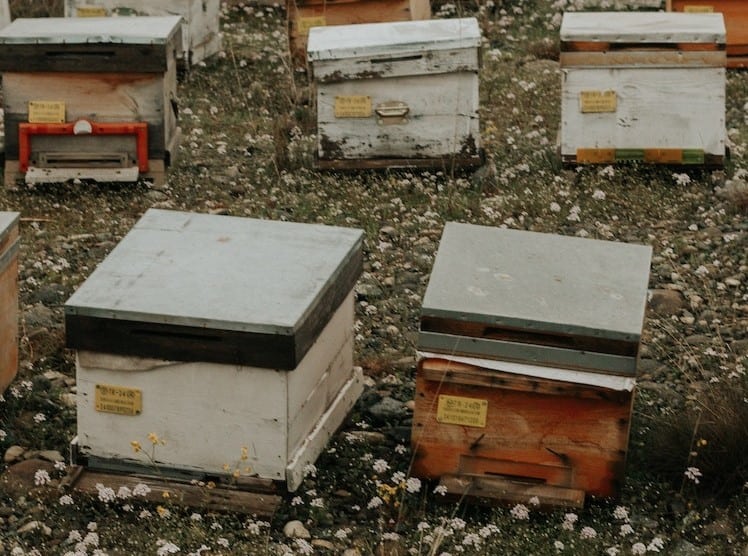
How to Move a Beehive a Long Distance
We’ve boiled down moving a beehive long distances into 5 easy-to-follow steps. Each step is outlined in greater detail below.
Steps 1-3 are the same as that for a short distance.
Ensure that the hive is well-ventilated for the trip because your bees will be indoors much longer.
Step 4 – Get adequate transport.
You’ll get away with carrying a swarm in the back seat of your sedan, but established hives are a different ball game.
Get a pickup truck when moving a hive to longer distances. Secure the hive so that you minimize the vibrations that go through the hive.
The last thing you want while moving beehives is to dislodge the brood comb as you move or undo the seal to the entrance in the middle of the trip.
Step 5 – Place the hive in the new area and open up the entrance.
Since everything is new, you don’t risk having the bees trying to get back to their original hive.
They’ll take a day or two to understand their new surroundings, and then they’ll be back in business.
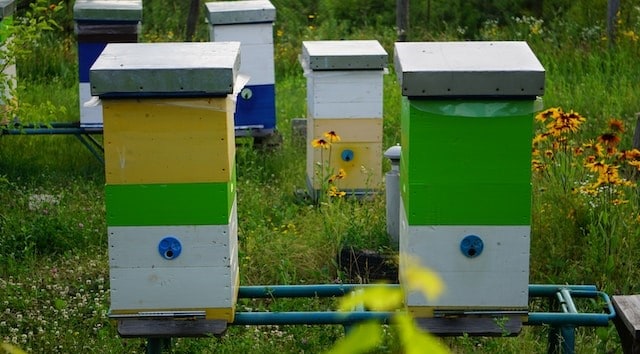
Conclusion
Moving hives isn’t complicated, but it is hard work. You need to be sensitive to the needs of the bee when choosing where to move the bees.
Bees are quite resilient, and unless something smashes the hive body open during the move, you are likely to keep your bees happy and healthy even after the move.
When you move a beehive, you may lose a few foragers at first. But the bees are unlikely to abscond if all other factors remain constant, i.e., the environment is conducive.
As long as you’ve thought things through, they’ll take to their new home like a fish to water.

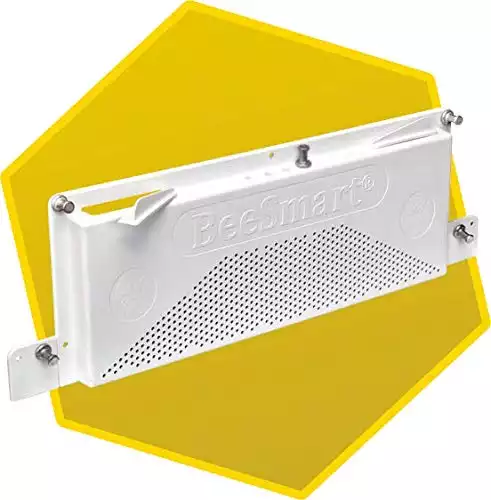




Very help full
We have to move them 140 kilometres
great thanks you I was going to put them in the bush for a week 4 miles away then bring back home and leave them in my swam trap. but its so big the swam it i move them in vehicle I think they will fall off the frames as no comb its all empty. Plan B just move them 3-4 feet each night for the week to new location away from my back door.
What do I look for after the move? This morning I woke up and there are dead bees on the ground. I know that some got out when we opened the entrance and placed flowers and branches in front. This morning I watched a few find their way out and the ones that flew away flew in the same direction. They took off and didn’t look back. Is this normal? We moved them over 10 miles so they shouldn’t be able to find their old home. Thanks for your help.
Our family is moving out of state, and I want to take my three langstroth beehives to our new home in the next couple of weeks. I don’t have a truck, but we are going to be pulling a 20-ft enclosed trailer with a diesel motorhome and could put the hives in the trailer. I have made three screened top boards for ventilation that can be strapped on. The trip will be approximately 8 hours. Do you think it is safe for the bees to be inside the trailer for that long? I have heard it’s important to give the bees water during a long trip. I’m not sure how to do that in this situation. Would it be adequate to spray water onto the screened top boards and maybe make a few stops along the way to give them more. I have kept bees for 15 years, but I have never moved hives a long distance before, so I’m a little nervous about it. I would appreciate suggestions or comments about my plan.
Hi, I had a hive move into my compost barrel a few days ago, this really seem to like it. They’re pretty docile they’re not by either by my presence around the drum and I can even slide the lid open to look inside. I would like to keep them And move them into the bee box. I just would like to have a suggestion on what the best way is to take them out of there and move them into bee box, without too much disturbance to them, or should I disassemble the compost box boxe and moving them or is it just best to reach inside and try to scoop them up and move them over ?
I hope your question has already been answered, but if not let me encourage you to move the bees into a real hive box. to see how this is done just look up “bees in a compost bin” on youtube. A picture is worth a thousand words, as they say.
Move any comb onto frames using elastic rubber bands to hold them in place and make sure to get the queen. All will be well. Bees are quite adaptive.